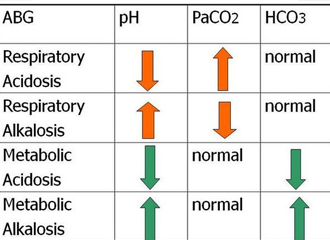There are different types of IV fluids used in healthcare. IV fluid therapy is an important topic you will encounter during your nursing program. Knowing the different types of IV fluids, how they work in the body, and the indications for use in different patient medical conditions is necessary. Let’s talk about a few concepts before we delve in!
THE BODY
Our bodies are made up of 60% water. Did you know that 40% of that water sits inside our cells? meaning that the other 20% sits somewhat outside our cells.
The inside of the cell is called intracellular (IC) and the outside is called extracellular (EC). The fluid inside the cell is called intracellular fluid (ICF), while the fluid outside the cell is called extracellular fluid (ECF).
The body always wants to maintain an equal fluid balance between the IC and EC. For this reason, these fluids in the body are able to move between both compartments, through a semi-permeable membrane. This movement occurs due to OSMOSIS.
OSMOSIS
Osmosis occurs in response to the quantity of solutes in each of these compartments. When a compartment contains high amounts of solutes, it is considered “hypertonic.” Also, the compartment with low amounts of solutes, is considered “hypotonic.” When both compartments have equal amounts of solutes, it is considered “isotonic.”
Osmosis is the movement of water from an area of low concentration of solutes (hypotonic) to an area of high concentration of solutes (hypertonic).
Now let’s apply the concept of osmosis here, and properly think about this. If the outside of the cell is hypertonic, osmosis causes water to move from the inside of the cell to the outside of the cell, to dilute it. In the same way, if the inside of the cell is hypertonic, osmosis causes water to move from the outside of the cell to the inside of the cell to dilute it.
Time for a break. I want you to properly grasp that concept above, before you move beyond this line. Understanding these concepts will help you properly grasp how the different types of IV fluids, work in the body. If you don’t, you should be emailing me right now. I would love to help you understand better.
So let’s dive into the terms you need to know….C’MON; You’ve got this!!!
ISOTONIC IV FLUIDS
The word “Iso” means equal or same, while the word “tonic” refers to the amount of solute concentration. Therefore “isotonic” can also mean “equal or same tonic.” By definition, the aim of an isotonic IV fluid is to replace fluid to the EC area, because it is depleted. It is not going to cause any kind of osmotic shift of water. Essentially, it is replacing what the EC has lost due to conditions such as diarrhea, blood loss due to injury or surgery, and dehydration.
Examples of isotonic fluids include: 0.9% Nacl, Lactated Ringer, 5% Dextrose in 0.225% saline (D5W1/4NS), and 5% Dextrose in water.
***Keep in mind that 5% Dextrose in water starts out as an isotonic solution, and after the body metabolizes the dextrose, it becomes a hypotonic solution.

HYPOTONIC IV FLUIDS
The word “hypo” means low. Therefore, “hypotonic” can also mean “low tonic.” By definition, a hypotonic EC area has a low amount of solutes and a high quantity of water and the IC area has a high amount of solutes and a low quantity of water. Applying the osmosis concept, you know that the fluid will shift from the EC area which is “hypotonic” to the IC area which is “hypertonic” in order to dilute it. These are given in conditions where the cell is shrunk or dehydrated, as with Diabetic Ketoacidosis & Hyper-osmolar Hyperglycemia.
When you infuse the hypotonic solution into the EC compartment, it will cause the movement of water into the IC compartment. Examples of hypotonic fluids include 0.45% Nacl, 0.33% saline (1/3 NS), and 0.25% Nacl.
***Always monitor patients for reduced circulatory volume, because we are moving fluid into the cell and could deplete the fluid outside of the cell.
***Also, do not give with patients who have increased intracranial pressure due to brain swelling. Also avoid in patients with burns or trauma because they already have reduced circulatory volume.
HYPERTONIC IV FLUIDS
The word “hyper” means high. Therefore, “hypertonic” can also mean “high tonic.” By definition, a hypertonic EC compartment has high amounts of solutes and a low quantity of water while the IC compartment has a low amount of solutes, and a high quantity of water. Applying the osmosis concept, you know that the fluid will shift from the IC compartment which is “hypotonic” to the EC compartment which is “hypertonic” in order to dilute it. These are used for conditions where the cell is swollen, and we need to shrink some of that swelling. Example is a patient with cerebral edema, where the brain cells are swollen and we need to reduce the swelling.
This is what the hypertonic aims to promote. When you infuse the hypertonic solution into the EC compartment, it will cause the movement of water into the EC compartment. Examples of hypertonic fluids include 3% saline, 5% saline, 10% Dextrose in water (D10W), 5% Dextrose in 0.9%, 5% Dextrose in 0.45% saline, and 5% Dextrose in Lactated Ringers.
***These fluids can cause fluid overload because of the continued movement of fluid to the outside the cell. Watch for signs of fluid overload in your patients;
I hope that this helps you understand the different types of IV fluids. Here’s a nice video reference to help you understand the concept even better.
Visit my other post on Heart Sounds Made Easy. Feel free to reach out to me if you still have difficulty with this topic. I am here to help!





